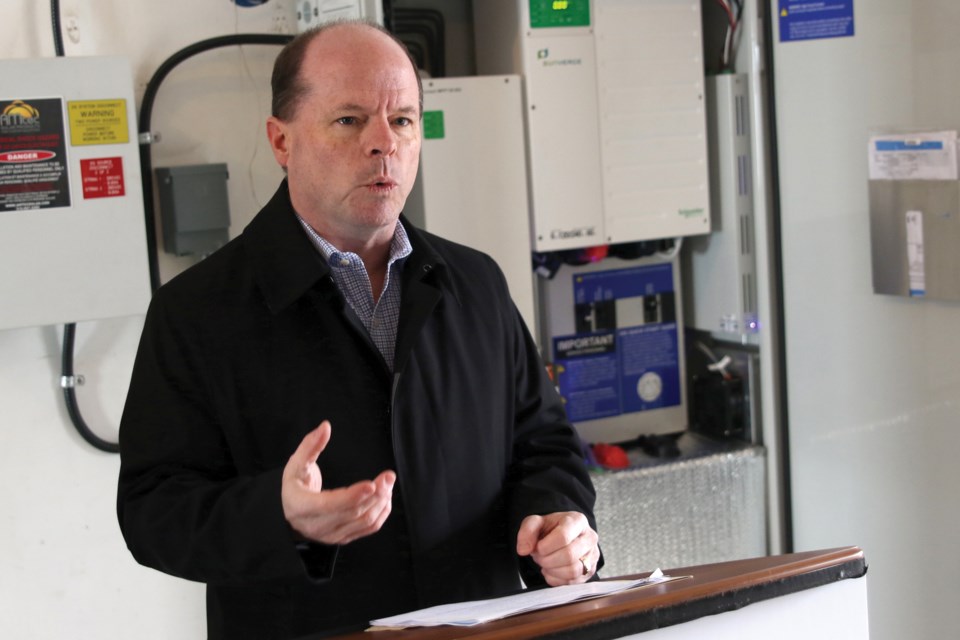THUNDER BAY -- Kristine Thompson can’t afford to have the power go out in her Oliver Road home.
The mother of three says the medication one of her children needs each day must be kept refrigerated at all times. On top of that, as a modern family of five, meal preparation is an important part of everyday life, not to mention their reliance on electricity to power iPads and computers, a house full of televisions and other electronic devices.
When Thunder Bay Hydro came calling last summer with an invitation to make their house a solar-power model for the region, she and her husband Jouni Kuokkanen leapt at the opportunity, armed with the knowledge that power outages would be a thing of the past and they might also save a little money along the way.
The partnership with publicly owned utility and southern Ontario company Powerstream Inc., saw solar panels installed in their home along with utility-grade batteries that collect solar energy during the day and convert it to electricity.
That power can be sent to a battery back-up installed in the family garage, used in the home or forwarded to the provincial power grid for credit against their energy bill.
“We’re high energy consumers,” Thompson said, explaining why she thinks Thunder Bay Hydro picked them as a possible test case for the technology.
“We are hoping to learn a lot from this process to and we are hoping we can learn how to better consume energy, save it and use it.”
Thunder Bay Hydro president Robert Mace called the system the future of electricity in Ontario, with customers concerned about skyrocketing energy rates.
“Technology prices are coming down, performance is going up. Customers are going to have a lot of options in the future regarding how they get their supply of electricity. It’s not going to be jus their traditional poles and wires,” Mace said.
“There’s going to be a component about that.”
While it might seem counterproductive for an energy provider to help customers find ways to save costs, it really isn’t, Mace added.
The cost isn’t for everyone.
While Kuokkanen and Thompson saw the estimated $50,000 unit installed for free because Thunder Bay Hydro and Powerstream officials needed a Northern Ontario prototype, future customers would need to cover the costs themselves.
In the long run, it is a money saver, said Powerstream’s Vikram Singh. He sees it as a great fit in Northern Ontario.
The hopes are high for the technology.
“We hope for it to be ubiquitous to be honest,” Singh said. “We’d like to see everybody have access to the technology.”
Singh said they hope to stagger the launch of the technology in the region over the next few years, helping a limited number of customers financially until the costs come down to make it affordable for a large number of potential customers.
